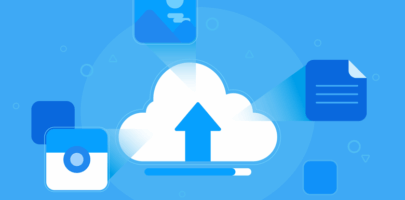- What Is Digital Asset Management (DAM)?
- Predicted Trends in 2025
- Manage Your Digital Assets with MarcomCentral
Get news, updates, and insights delivered straight to your inbox.
The State of Digital Asset Management 2025

Marketing teams are under more and more pressure to successfully develop and produce digital content across multiple marketing channels and formats to reach intended target audiences. Therefore, there’s an increasing need for digital assets to be kept in one place so they are easily accessible and managed. Digital asset management (DAM) software offers a solution and empowers team members to manage all their digital assets in one secure location, all while also aiming to streamline workflows, increase productivity, and ensure brand consistency.
In 2023, the global DAM market was valued at USD 3.96 billion. Experts predict the value will jump to USD 4.59 billion in 2024 and reach USD 16.18 billion by 2032. These statistics indicate that DAM will remain a major player for companies wishing to stay relevant in a digital-first world. Explore the DAM trends expected in 2025 that will be used to create value and assist organizations in storing, tracking, and monetizing their digital assets.
What Is Digital Asset Management (DAM)?
Digital asset management (DAM) refers to a system or process used by organizations to store, organize, and retrieve digital assets when needed. With a DAM system, content creation teams can quickly locate specific brand assets, reducing time spent searching and speeding up initiatives. DAM systems are intended to support the entire lifecycle of digital assets, starting from creation to archival or deletion.
Additionally, with shared access, DAM solutions enhance collaborative efforts, facilitating better workflows and organization. Furthermore, managing assets centrally reduces duplication, which helps to improve cost savings for companies.
A digital asset management platform provides centralized storage for various types of digital assets that hold value for a company, such as:
- Images
- Videos
- Audio files
- Documents
- Logos
- Brand guidelines
- Design templates
- Illustrations
- Product data sheets
- 3D models
- Presentations
- Spreadsheets
The key features of digital asset management solutions include:
- Centralized storage: An accessible centralized repository for storing all digital and media assets.
- Metadata management: An ability to include detailed descriptive information, such as keywords, categories, and dates, for every asset to enhance searchability and retrieval.
- Advanced search: Search functions with filters and auto-tagging enable users to locate specific assets quickly and improve discoverability.
- Version control: Users can track changes made to an asset over time and promptly return to previous versions if necessary.
- Access control and permissions: Dam platforms can limit the ability to control, view, and download specific assets by setting user roles and permissions.
- Collaboration features: Multiple users can simultaneously access, review, and approve assets for better teamwork.
- System integration: DAM systems can be integrated with other business systems like CRM, CMS, and marketing platforms for streamlined workflows.
- Asset sharing: Organizations can share digital assets securely with external collaborators through links or branded portals.
- Brand consistency: Marketing teams can ensure consistent brand usage by providing a central source for approved brand assets like logos and color palettes.
- Rights management: Manage licensing and copyright information associated with each asset to comply with legal requirements.
- Asset analytics: Users can better understand how assets are utilized and identify potential issues with asset analytics and data tracking features.
- Scalability: DAM software allows the ability to accommodate a growing volume of digital assets as the organization expands.
Predicted Trends in 2025
Here, we explore the trends expected for digital asset management systems in the coming year.
Exploring Use Cases Beyond Marketing
Traditionally, DAM systems have been mainly used by marketing, brand, and communications teams. More and more, organizations are realizing the potential of DAM and how it can support various content across an entire organization.
In 2025, companies will explore more DAM use cases to support other parts of the business. Examples might be customer portals for clients to access relevant documents, integration with sales tools, and videos along with other training materials for enhanced onboarding processes.
The expansion of DAM capabilities will increase the software’s value and validate it as an essential tool for organizing and delivering various forms of digital assets. This tool will empower every department to improve initiatives, whether customer support, sales enablement, internal training, or other pertinent business operations.
Artificial Intelligence (AI) Usage and Integration
AI is seemingly everywhere with claims to make things better. For companies wishing to utilize and incorporate AI into their business practices, it is essential to identify where it genuinely benefits users. Before utilizing AI-powered features, companies must practice responsible implementation and gauge where it directly improves the user experience and drives real value.
In terms of DAM, metadata tagging will play a bigger role in use cases in the coming year, making it an appealing trend. Tagging automation using machine learning AI will allow companies to apply tags to assets based on the business’s unique metadata structure. Doing so ensures digital assets are tagged in a way that makes sense for your company, which, ultimately, is necessary for finding content faster and with greater accuracy.
AI will also be utilized more to streamline workflows with the ability to automatically check content for brand consistency and enhance the searchability of assets with natural language capabilities.
Better Customer Experiences Reliant on Governance and Compliance
Governance and compliance aren’t just terms reserved for legal obligations. Rather, they are essential for delivering a reliable and consistent user experience. Organizations must make it a point to manage a mixture of legal regulations, brand compliance, and guidelines specific to their industry. This entails common regulations, such as the General Data Protection Regulation (GDPR), and newer initiatives, including AI-generated content guidelines and Digital Product Passports (DPP).
DAM key features like access controls, version control, and audit trails make it easier for organizations to track and manage changes regarding digital assets. This aims to ensure accuracy and compliance across the board.
More and more in the coming year, DAM will be used to avoid inconsistency with the purpose of boosting customer trust. User experience will be improved by allowing customers to search for products and being met with reliable, up-to-date content, making their overall experience pleasant and increasing their confidence in the brand.
Seamless Integration With API-Driven Design
Many experts predict the future of digital asset management lies in seamless interoperability, serving as a vital part of the broader ecosystem for a more unified workflow. This involves integration with customer relationship and content management systems, along with marketing automation platforms. This level of integration is beneficial as it will streamline operations, improve teamwork, and increase the effective use of digital assets.
To seamlessly exchange data and assets across an organization, DAM needs to be flexible and scalable. With an API-driven approach, DAM can successfully connect with other critical business systems. This will allow content to flow freely and efficiently between various systems. This integration will not only serve to maximize asset value but also encourage possibilities for creating customized workflows that meet specific business needs.
Enhanced Focus on Sustainable Tech in DAM
For businesses and organizations, sustainability isn’t a buzzword. Instead, it is viewed as non-negotiable in the modern landscape and DAM is no exception. Experts predict a trend toward more sustainability and environmental consideration in DAM going forward.
The reason for a sustainable, cloud-based DAM approach is to help companies reduce their environmental footprints by achieving efficient storage and eco-friendly hosting. Making DAM the single source of truth cuts down on unnecessary storage. This method offers a way for companies to do their part in helping the planet and saving on costs in the process.
More User-Friendly DAM Platforms
Not all users within an organization are technically sound. However, as content creation and brand management become expected of everyone across organizations, there needs to be tools in place for nontechnical users to easily upload, tag, and manage digital assets.
A trend that may become more prevalent is more user-friendly DAM platforms. These types of DAM platforms are designed to be easy to navigate and use, with a simple interface that allows users to quickly access and manage digital assets. More importantly, user-friendly DAM platforms have a minimal learning curve, making assets accessible to a wide range of stakeholders within an organization.
Manage Your Digital Assets with MarcomCentral
How is your organization managing its valuable digital assets? Do you think it could be improved upon new advancements in digital asset management? MarcomCentral provides DAM solutions that put all your company’s assets in one place for a single source of truth. The days of fishing through overflowing, unorganized shared drives littered with assets are over.
Our DAM systems are built from the ground up and designed to be easy to use, making them inclusive to all members of an organization. Furthermore, digital asset management solutions from MarcomCentral are tailored to your preferences, meaning users, tags, collections, and other settings can be customized for a more personalized platform, allowing your team to work more intuitively from the start.
Those wishing to learn more about our DAM platform or pricing can contact us today or experience our solutions first-hand by requesting a demo.


